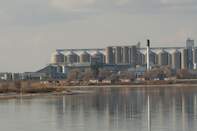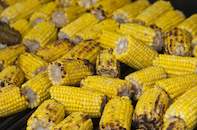Maize is used as staple food for the majority of the country’s households and the most important livestock feed ingredient in South Africa.

Human consumption of maize has declined in the country since 2008, due to the growing middle-class and as a result, in a shift towards other staples, such as bread, rice, potatoes and pasta. The shift has also led to a bigger demand for animal protein, such as meat, dairy and eggs which in turn has caused a growing demand for maize in the feed market.
White maize is primarily used for human consumption in South Africa, with surplus either being exported to other African countries or sold in the feed market. Yellow maize can be used for human consumption, but this is highly unlikely since consumers expect and are used to the taste and appearance of white maize meal.
Maize for Human Consumption

Maize can be used and enjoyed as a vegetable, for example as corn on the cob or mini-veggies. Alternatively, it may be processed into maize meal, polenta or grits during dry milling, or maize derivatives, such as corn starch, corn syrup, dextrose or corn oil during wet milling.
As such, maize or maize derivatives can also be used in snacks, such as popcorn, corn chips like Doritos and Nicknacks, candy like marshmallows and in baked goods and puddings.
White maize is mainly used to produce maize meal, which is primarily used to make porridge in South Africa. The percentage of germ removed during extraction will influence the grading of the end product.
Maize meal that has the least germ extracted is labelled “unsifted”, moving up the scale as extraction rates increase, to “sifted”, “special” and “super” maize meal. South Africans generally prefer the special and super grades, so most of the bigger millers have stopped producing “unsifted” and “sifted” maize meal.
But other standards also apply. Super fine and super maize may not contain more than two percent fat or 0,8% fibre, and at least 80% of the meal should pass through a 0,3 mm sieve to qualify as superfine or 90% should pass through a 1,4 mm sieve to qualify as super maize meal.
For unsifted maize meal, an oil content of 3,5% to 4,5% and a fibre mass of 1,2% to 2,5% is allowed. At least 90% need to pass through a 1,4 mm sieve to qualify for this grade. In an attempt to address malnutrition, in 2003 South Africa passed legislation according to which all unsifted, sifted, super and special maize have to be fortified with vitamin A, thiamine, riboflavin, niacin, pyridoxine, folic acid, iron and zinc.
There are close to 200 maize millers registered with the South African Grain Information Service (SAGIS), but Pioneer Foods, Premier Foods, Pride Milling and Tiger Brands together mill about 75% of all the maize meal produced in South Africa.
Read more about More Uses of Maize